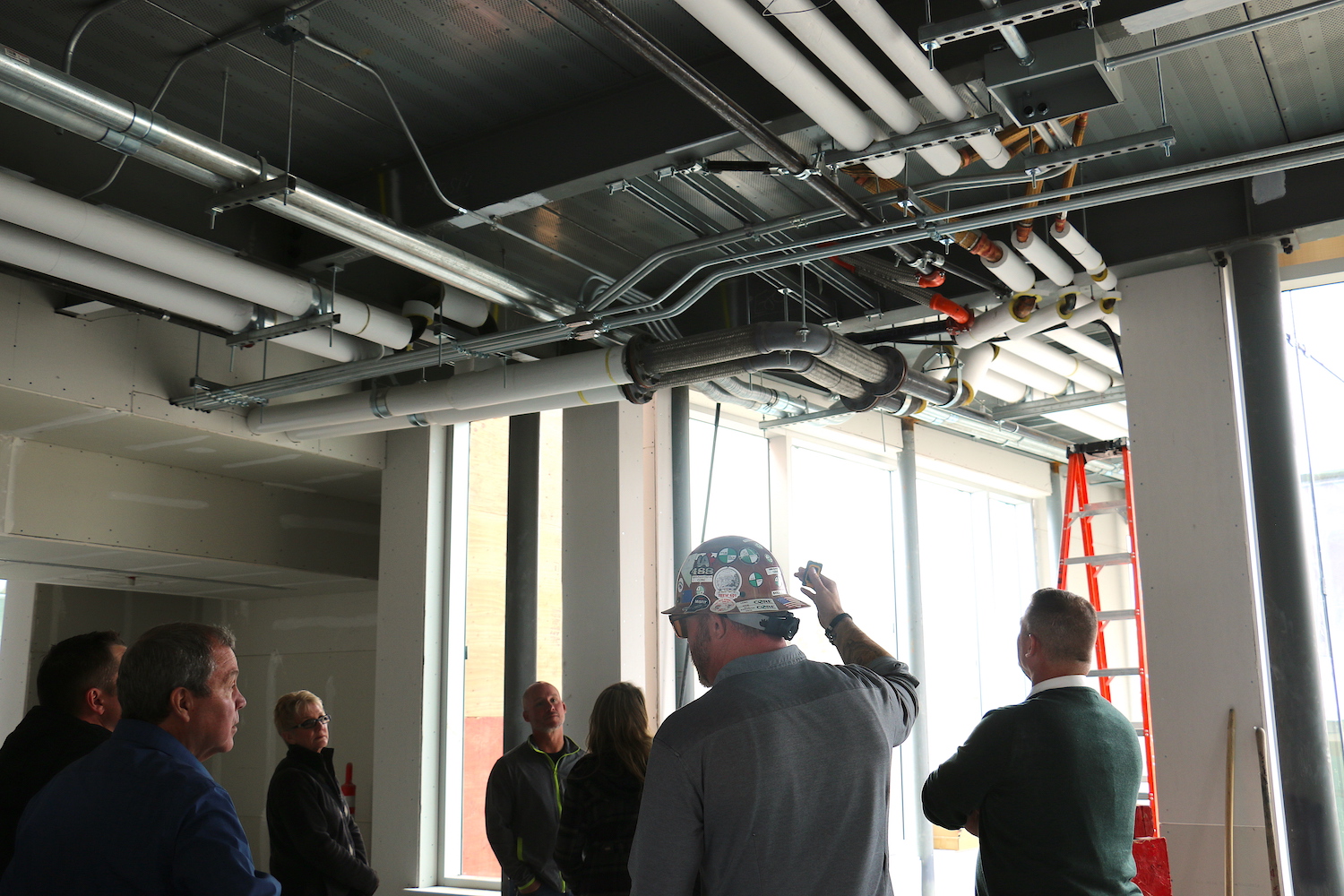Eagle Valley Middle School Principal Lee Conley discusses an addition to the school March 17, 2022. Jessica Garcia/Nevada Appeal
Jessica Garcia/Nevada Appeal
 Ronnie Treglia, project superintendent for CORE Construction, center, explains the interactive, inquiry-based aspects of the building include showing students how construction and pipelines work. The pipes eventually will be labeled and provide STEM activities for students to learn about design, planning and engineering about their own school buildings. (Photo: Jessica Garcia/Nevada Appeal)
Ronnie Treglia, project superintendent for CORE Construction, center, explains the interactive, inquiry-based aspects of the building include showing students how construction and pipelines work. The pipes eventually will be labeled and provide STEM activities for students to learn about design, planning and engineering about their own school buildings. (Photo: Jessica Garcia/Nevada Appeal)